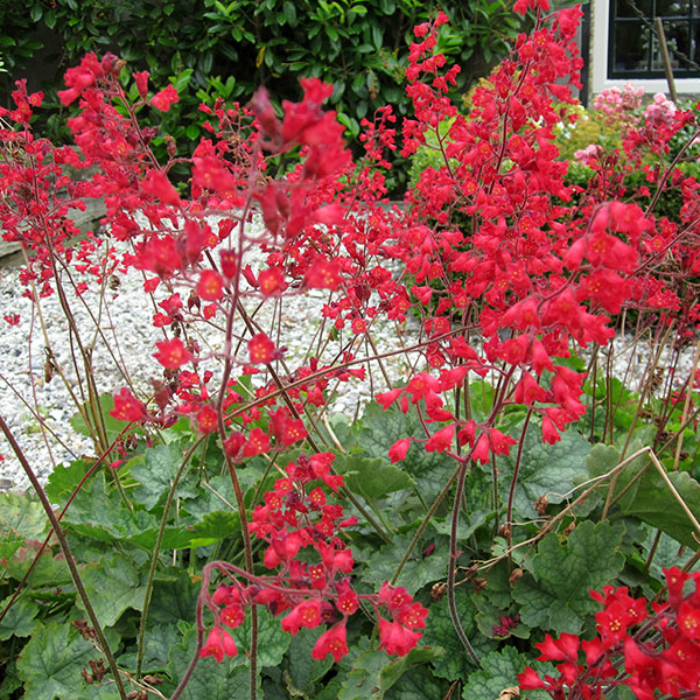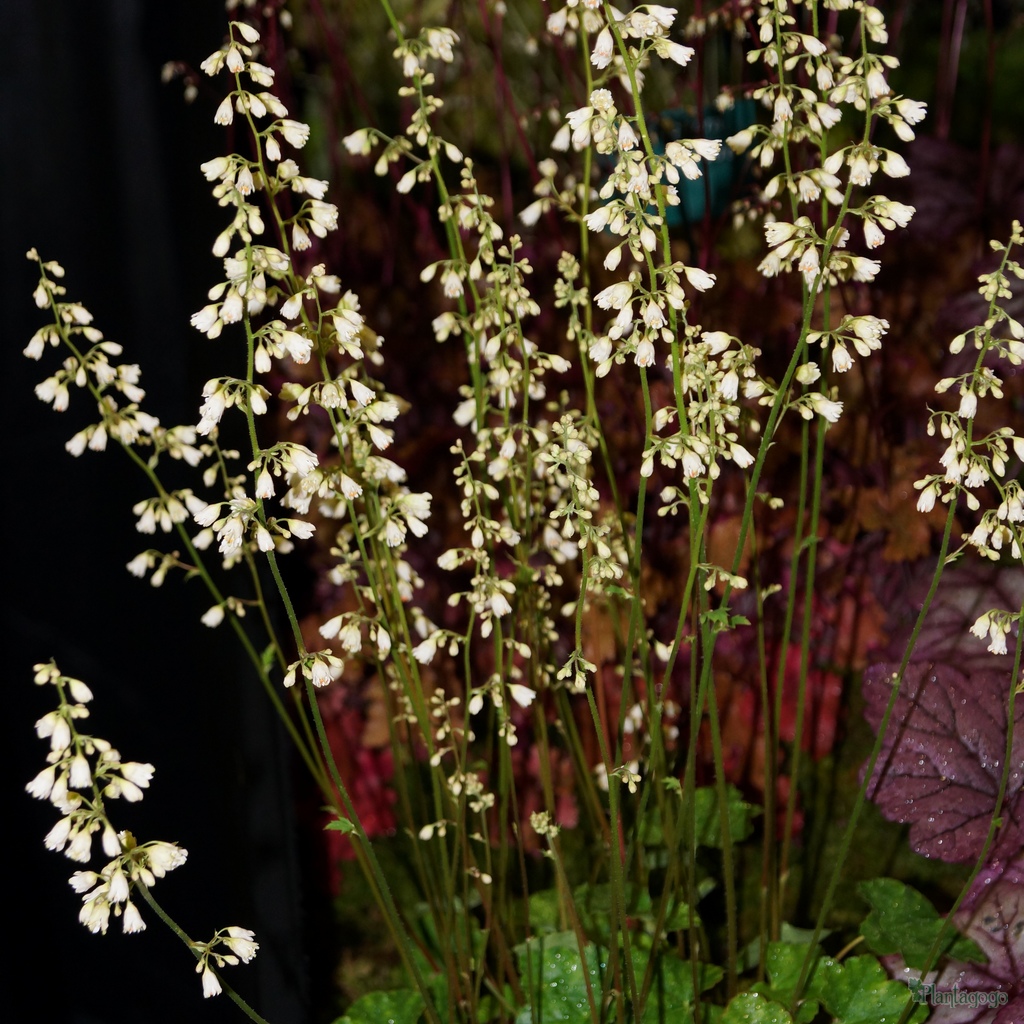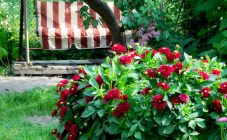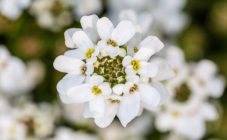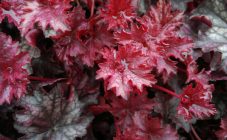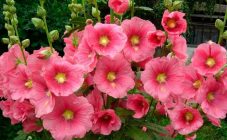Content:
Heuchera blood-red is one of the perennial plants from the Saxifrage family. Its main advantage is its excellent decorative properties. The height of the Heuchera rosette can reach 25 cm. The stems, on which large bright flowers are located, grow up to 50 cm in height. The color of the buds can be varied: from red, burgundy and pink to red and purple.
Brief description of culture
The culture grows in the southern United States and northern regions of Mexico. Despite the subtropical climate habitual for this flower, Heuchera feels great in the regions of Central Russia. The only thing that affects it badly is the dry conditions of the hot summer.
Duration of flowering is 2-3 months (from July to August), and the decorative properties of Heuchera are preserved until autumn. The species is cold-resistant (tolerates very low temperatures down to -40 ° C) and unpretentiousness. The bushes of this culture grow very quickly, so they need to be replanted every 5 years.
Blood-red Heuchera: varieties
Among the most famous varieties of blood red heuchera, the following are distinguished:
- Robusta. The main characteristic is the presence of large red flowers. In autumn, the leaves of the plant turn burgundy. The flowering period is June-July.
- Gracillima. Heuchera of this variety reaches a height of half a meter. The flowers are pink in color and are collected in dense, graceful buds.
- Rakete. This variety is represented by geychera up to 70 cm high. They are distinguished by late flowering. The buds are red.
- Splendens. The stems grow up to 50 cm in height. It is a carmine-red Heuchera that blooms in July-August.
- Geicher Snowstorm. The maximum height of the peduncles is 35 cm. The foliage has a variegated color, the flowers are bright red. The variety is very delicate and whimsical, without shelter, it is not able to endure frost. Flowering begins in May and ends in July.
- Bressingham Bronze (Bressingham Hybrids). The plant reaches a height of 60 cm. Flowers can be pink, red or white. Flowering occurs in mid-summer - early autumn.
- Alba (Alba). The flowers are white in color, collected in lush inflorescences.
- Heuchera Heuchera Starburst (Staburst). The green leaves are brown. The variety tolerates cold well.
- Geichera Purple Castle. The color of the leaves is varied. Due to this, heuchera purple has a great decorative value.
- Heuchera blood-red Heuchera Sanguinea Coral Forest (Coral Forest). Differs in long, bright flowering. The color of flowers in Heuchera Coral Forest fully corresponds to the name - it is coral.
- Heuchera is red-leaved. The height of the stems is 40-50 cm. The red-leaved variety blooms in June-August.
Planting Heuchera
The process boils down to the following steps:
- planting material is purchased for planting a flower in open ground;
- the optimal landing site is selected (it should not be highly illuminated, partial shade is desirable);
- a planting hole is dug 30 cm in diameter and 30 cm in depth;
- a layer of fertilizer and ash is spread on the bottom of the pit;
- plant a crop (seed, stalk or part of a divided bush) and cover it with earth mixed with sand;
- water the plant.
Culture care
The plant does not require complex care, the growing process is also not laborious. It is recommended to loosen the soil or mulch from time to time. Wood bark or acid-free peat are good mulches.
It is noteworthy that the flower does not at all need constant abundant feeding. On the contrary, the crop needs to be fertilized only occasionally in a small amount (2 times less than other plants require).
This species does not need a winter shelter, however, in severe frosts, it is still recommended to protect the culture with spruce branches or dry leaves.
The transplant is done once every 3-5 years with division. The stem, exposed as a result of the strong growth of the rosette, is cut to fresh tissue.
Diseases and pests
The threat to this species is represented by:
- leaf nematodes;
- snails;
- slugs;
- weevils.
To protect the crop from these parasites, heuchera must be treated with insecticides.
Among the diseases there are such as:
- powdery mildew;
- gray rot;
- rust;
- spotting.
They occur quite rarely due to stagnant water in the roots of the plant or too much fertilizer.
The first two diseases are eliminated as follows:
- First, the bush is dug up.
- Then the affected parts of the plant are cut off.
- The remaining tissues are treated with a fungicide.
- The flower is transplanted to another piece of land.
Use in landscape
The flower is actively used in landscape design. It is great for decorating a flower bed, a summer cottage or a garden. Also, blood-red geyhera looks great in a bouquet arrangement. This variety goes well with yellow geyhera, ferns, kupins, roses, barberries, bells. Very often, culture serves as a decoration for reservoirs.
Geykhera red is a beautiful, undemanding ornamental plant in care. Thanks to the many different varieties and hybrid options, each grower will be able to choose the best option for himself.
